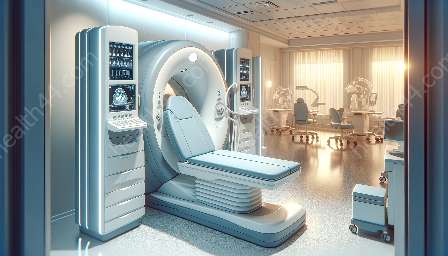Computed Tomography (CT) scanners have revolutionized medical diagnostics, providing detailed 3D images of body structures for precise diagnosis and treatment planning. These cutting-edge diagnostic equipment and medical devices & equipment offer unparalleled insights into the human body, enhancing the delivery of healthcare services and improving patient outcomes.
The Technology Behind CT Scanners
CT scanners utilize X-ray technology to generate cross-sectional images of the body, allowing healthcare professionals to visualize internal structures with remarkable detail. The scanning process involves the rotation of an X-ray tube around the patient, capturing multiple images from different angles to reconstruct a comprehensive view of the target area.
Applications of CT Scanners
CT scanners are indispensable in various medical specialties, including radiology, oncology, cardiology, and neurology. They are used to detect and diagnose a wide range of conditions, such as tumors, fractures, vascular diseases, and internal injuries. Additionally, CT scans play a crucial role in guiding surgical interventions and monitoring treatment responses.
Benefits of CT Scanners
The advanced imaging capabilities of CT scanners enable healthcare providers to make accurate and timely diagnoses, leading to improved patient care and management. Moreover, CT scans help minimize the need for exploratory surgeries, reducing patient discomfort and healthcare costs. Furthermore, CT technology continues to evolve, with innovations like dual-energy and spectral imaging enhancing diagnostic accuracy and expanding the scope of applications.
Integration with Diagnostic Equipment
CT scanners are integral components of diagnostic equipment suites in modern healthcare facilities. They seamlessly integrate with other imaging modalities, such as magnetic resonance imaging (MRI) and ultrasound, allowing healthcare providers to utilize a comprehensive range of diagnostic tools for comprehensive patient evaluation. The interoperability of CT scanners with electronic health records (EHR) and picture archiving and communication systems (PACS) further streamlines diagnostic workflows and enhances data accessibility for healthcare teams.
Advancements in Medical Devices & Equipment
As part of the rapidly evolving landscape of medical devices & equipment, CT scanners continue to undergo advancements in imaging technology, software algorithms, and patient-centric design. These advancements aim to enhance image quality, reduce radiation exposure, and improve the overall patient experience during CT examinations. Furthermore, the integration of artificial intelligence (AI) and machine learning algorithms in CT imaging holds promise for automating image analysis and facilitating personalized treatment planning.


